The Potential Of: Shinra’s Non-SOLDIER Experiments
by X-SOLDIER April 30, 2018 0 commentsThe Art Director of the FFVII Remake, Shintaro Takai, recently talked about what he wanted to change in the Remake in an interview with CGWorld that was translated into English by Dualshockers. One part where he speaks about the changes to the level of thoroughness in the design process stood out to me quite prominently:
“He mentioned that when working on the original Final Fantasy VII, he did not put as much thought into the effects as he does now. For instance, there might have been an enemy emitted red flames while attacking even if it did not make much sense, just because it looked cool. Now, if an enemy emits red flames, it’s due to its nature, the weapons it uses, its energy source, and so forth. In this case, Takai-san also puts more thought into elements like emitted smoke and explosions. Even if it might not be official canon, he creates his own theories and stories about these things, so the effects at the time and those in the Remake might not be directly connected.”
What’s interesting is that this provides some context to the level of design that existed for the things in the original game. Most things seem to have had an internal consistency in their basic design, but the specifics of their attack and magic animations were just game elements. However, in the Remake it’s clear that there is a level of internal world consistency being elevated with to everything that they’re designing. This greatly excites me, because it means that there is a LOT of thought going back into some of the unexplored elements in the original game that may come to light in the Remake.
Shinra’s Other Dark Experiments in FFVII
As you’re learning about Shinra, Mako Energy, SOLDIER, Jenova, Hojo and all of the strange experiments that take place in the setting of Final Fantasy VII, the story is only focused on things as they apply to Cloud & Sephiroth in SOLDIER, Jenova & Aerith with the Promised Land (which also involves Hojo attempting to create a long-lived hybrid Cetra offspring with Aerith & Red XIII, but we’ll leave that discussion for another time). Beyond those, there are a number of incredibly intriguing dark hints and developments about other things that Shinra’s been doing that get quietly left on the table. The one we’ll focus on are Shinra’s non-SOLDIER Combatants that you encounter as enemies in several different locations throughout the game.
It’s clear from Cloud’s line in the elevator going down to the No. 1 Reactor, “The only thing I care about is finishin’ this job before security and the Roboguards come” that you’re sneaking into a guarded facility, and Shinra uses a mix of robotic and non-robotic security measures. Later on we learn about Hojo’s crazy experiments, of those we only really hear directly about SOLDIER. We know that they come in gradually more capable 3rd, 2nd, & 1st ranks and that they have a unique glow in their eyes as a result of exposure to Mako Energy. There are other enemy types that also have 3 ranks, and are more prolific and also disturbing looking, but we never learn about them directly: Combatants.
These troops have large metal attachments that let them shoot directly from their arms, monstrously clawed hands and feet, but are humanoid, standing in an odd crouched stance. They seem to sit in the strange middle ground of being neither human, nor monster, nor robot – but rather strange, cybernetic mutants that Shinra actively employs in a number of different facilities. There is quite a bit of information that you can gather from their use in the game, as well as their models, concept art, and even more recent Remake models and FFVII art that have become available more recently thanks to Final Fantasy Mobius (and curated by the awesome Radigar).
More Than Just Machines
The most important thing to establish is that these Combatant-type enemies are not just robots like many other types of enemies in the Shinra HQ and Mako Reactors. While it’s not completely consistent, almost all artificially created entities have a shattering-apart death animation in FFVII – whereas most organic entities have the standard fade-to-red death animation. The semi-exceptions to this are Sample H0512 & Yin/Yang, which are non-robotic enemies that both use a final shattering-apart death animation. However, while both Sample H0512 & Yin/Yang are organic, they’re also experiments of multiple entities that are artificially stitched together, which is why I refer to the animation as being specific to artificial entities rather than just robotic ones. Yin/Yang still uses a standard fade-to-red death animation when just a single half of it dies like a normal single organism would, but shatters apart if both die at once, like Sample H0512 does. What’s especially telling here for the Combatants is that, like Yin/Yang, the Strengthened Combatants (Mighty Grunts) also have both types of death animations that change contextually on how they’re defeated. They use the shattering animation only if you destroy their outer armor. If you kill them outright in a single hit or when you destroy their exposed, Unarmored form, they use the fading death animation, suggesting that their inner form isn’t an artificially created one but rather a single living entity.
Thanks to our translator, hito we know that this particular animation isn’t just a coincidence, as this particular detail is even called out explicitly in the Strengthened Combatants’ concept art (which we’ll cover even more thoroughly in a little bit).
強化戦闘員
㊟アーマー破壊モーションが必要!!
“Strengthened Combatant
NOTE: Needs armor destruction animation!!”
Drawing this distinction in the original is important, as it will clarify bounds for speculation applied from the other Compilation entries as well. For example, in Dirge of Cerberus there are humanoid-looking robots back in the time when Vincent was a Turk, which seems to point towards the company’s specific capabilities at making its own AI-type humanoid robots. While some of this AI technology may be involved in controlling them, we at least know that with the Combatants we’re starting with a living being at the base that is given significant technological integration.
Even just in the context of just Final Fantasy VII, this death animation difference likely categorizes these Combatant enemies as “Security” rather than as just “Roboguards” that Cloud refers to. The most important thing now is to identify which enemies in the original game share the same physical traits. I’m using slightly different names than the English translation, because it makes it easier to refer to them collectively. (Each name below has a linked image to the in-game enemy it refers to).
Types of Shinra Combatants:
- Combatant: 戦闘員
- Special Combatant: 特殊戦闘員
- Senior Combatant: 上級戦闘員
- Strengthened Combatant: 強化戦闘員
- Aero Combatant: 空中兵
Now, it’s important to define what makes all of these enemies belong in a group together. The first three are all very straightforward, since they’re nearly identical Blue, Red, & Black clones of one another, I’ll refer to them all as standard Combatants. The Strengthened Combatant uses the same term for Combatant that the others do in Japanese (戦闘員), but the Aero Combatant is a bit of an odd man out just looking at the in-game model. Aero & Strengthened Combatants both have two different stages, that transition depending on injury, but that’s too much of just a gameplay mechanic to rely on as a source of correlation. To really understand these 5 entities’ similarities, we have to check out the original game’s Concept art for them.
It’s worth noting that the Armored Strengthened Combatants have some additional details listed in the notes on their Concept art regarding what their movement should be like:
Type-Aはほとんど動かない様にして下さい。
ダメージ・攻撃のみでいいぐらいです。
Please make Type-A stay mainly still.
Just moving when taking damage or attacking will do.
The Unarmored versions also have a note about their pose when moving as well:
すべる時は両手を広げてこんな感じ
When they slide, they spread out their arms like this
At this point, it’s much easier to start to see that there are many small details to their design, and there are some basic similarities between all of them. Let’s break out a quick list of those, and then we’ll make a separate one diving into specifics and detail on each of the things that they share between one another.
Strict Similarities:
- Thin humanoids
- Unnaturally thin upper arms
- Feet that are too long (even with the original FFVII’s stylized look)
- Large, weaponized containers over their forearms and hands
- An apparatus that completely obscures all their face and skin (unlike SOLDIER and MPs)
- Head modifications that output some form of gas
Correlating Details:
- The arm modifications for the standard Combatant (top left) have their palm-based weapon barrel marked as being important. The Armored form of the Strengthened Combatant (top right) is clearly built with a gun barrel that fits into this type of attachment for the Combatant inside.
- The Combatant (top left) & Armored form of the Strengthened Combatant (top right) both have a vent with a little sketch of gas exiting it. Since gas output going up into the propeller blades could potentially interfere with flight for the Aero Combatant, it has a larger head attachment, with a tube connecting to a pressurized container stored on its back.
- The Unarmored form of the Strengthened Combatant (top center) gives a more exposed look at what these beings look like. With the attachments to its forearms and lower legs, we can see that, from elbow to mid-shoulder and from knee to mid-thigh, they have a number of parallel lines ending in rings directly bolted to their flesh, making it apparent that the Aero Combatants have the same design around their necks, and moving to the container over their head, explaining why it’s much larger and visually different than the others’ ones.
- The Unarmored form of the Strengthened Combatant also shows something else interesting. There are three bolts on either side of their chests. These bolts directly line up with the holes in the chest armor attachments that SOLDIER use, which makes it clear that the armor Shinra makes is designed to be multi-purpose and usable by all their troops.
- Their feet are all too long, but while the standard Combatants all have visible bone-like claws emerging from them (just like they do on their hands), the Strengthened Combatants’ are obscured by their wheeled attachments, and the Aero Combatants have more specialized footwear – likely to help them land safely.
- While all of their faces are obscured, they all see through a single viewport. The Combatant has its mechanical eye bolted directly to it, the Strengthened Combatant’s armored form has a single cone for view giving it specific focus for accuracy, while its unarmored form has a more dome-like head for a wider range of vision due to its increased mobility, and the Aero Combatant has a long strip more (like Cyclops from X-Men) that it can see out of, directing its vision primarily down in front of it.
The final detail deserves its own section, especially because it requires a more in-depth analysis. All forms of Combatant aside from the Aero Combatant have a four kanji message inscribed on their unique limb attachments. Given that the Aero Combatant’s special attachment is on its head, no one would be likely to see one there, and its Japanese name calls it something closer to an “air trooper” it seems like there’s an intentional reason they were left out. Additionally, the only ones who retained them in-game are the three standard Combatants, as you can see above the Strengthened Combatants don’t have the kanji on their in-game models (even lacking the Shinra Logo on their shoulders).
Combatants’ Kanji Messages & Meanings:
- Combatant: 火気厳禁 – Fire is prohibited / No open flames.
- Special Combatant: 問答無用 – Arguing is pointless.
- Senior Combatant: 色即是空 – Matter is void / All is vanity.
- Armored Strengthened Combatant: 百発百中 – Infallible / Always hitting the bullseye.
- Unarmored Strengthened Combatant: 交通安全 – Traffic Safety.
This makes it pretty clear that SOMEONE was going to encounter these entities in a work environment, and that this message served to give a warning, and dissuade approaching them. Most of the time we see them, they’re inside Shinra facilities, especially Reactors. In the No.1 Reactor, AVALANCHE fights against normal MPs outside of the reactor, but encounters Combatants within the Reactor itself. It’s likely that these messages were a warning primarily intended to be seen by other Shinra employees that would keep them in line. It’s possible that regular folk living on the plate might encounter them, but that would be a rarity. It’s also likely that this means that the Combatants themselves may or may not be capable of speech – possibly as a result of the procedure that made them what they are. Their general appearance and printed messages make it seem like they’re meant to be mistakable to outsiders as some other form of Shinra robot guard, rather than the slightly monstrous, cybernetic sentries that they are.
Why did Shinra Make Combatants & What Are They?
To answer that, we need to look where they’re encountered – Mako Reactors. Shinra needs troops inside Mako Reactors specifically to protect them against terrorist activity like that from AVALANCHE. After the war with Wutai and leading up to the events of the game, it’s clear that their unique brand of totalitarian rule over Midgar makes them a good number of enemies all across the globe, so it’s only natural that they want to protect their assets inside Reactors. That comes with a problem though, as Mako exposure has various side-effects.
It’s very apparent in the game that Shinra is doing Mako-based experiments with individuals outside of just SOLDIER, but that SOLDIER is the only program that’s exposed to the public, because all of its members are still recognizably human. That helps them get active volunteers, like young Cloud interested in being a part of what Shinra’s doing. That shows heavily in the way that they communicate to the public about Sephiroth after he’s gone off the deep end, and how it contradicts the horrors of what actually happened. There’s a clear line between what Shinra’s employees are exposed to and what the general public is made aware of – and with a company that happily drops a whole city plate to kill terrorists and abducts its own employees for Hojo’s scientific experimentation, it’s clear that it maintains that silence through fear, and protects against active retaliation with these types of Combatants.
We know that Mako exposure is responsible for strengthening SOLDIER, as well as giving their eyes that uniquely recognizable and unnatural glow, but we also know from that prolonged and concentrated exposure to Mako causes significant mutation to human subjects, which we see contained in the pods in the Nibelheim Reactor, and also as enemies in Crisis Core, referred to as Makonoids:
The Makonoids have a number of interesting features that are immediately apparent: They have monstrously clawed feet and hands, peeled back lips exposing their teeth on their faces. The Crisis Core concept (bottom right) is slightly bulkier with the claws more pronounced, but the original being much thinner. With both, the only colours used for them in the game are a familiar Blue, Red, & Black that we see on the standard Combatants. It’s unclear if these mutants can speak as we only hear the one falling out of the pod screaming inside of it before it bursts open and it curls in a fetal position.
What’s interesting is that aside from loosely establishing this, the game continues on with the main story with SOLDIER and Jenova, and doesn’t touch on these experimental subjects afterwards. These beings are exposed to highly concentrated Mako energy that would usually be used for creating Materia. What this means is that these mutants would have a massive concentration of Mako energy saturating their entire bodies – and Shinra specializes in using Mako as an energy source to generate power.
That explains why all of the Combatants are cybernetic, and why they have a cranial vent that’s giving off a gas. They’re essentially functioning as their own mini-Reactors using the heavily concentrated Mako in their bodies to power their cybernetics. Their heads, hands, and feet are the most heavily mutated, and all of those are obscured to some degree on every form of Combatant with these technological attachments.
There is another creature in the game where those same mutated features are fully visible, that we mentioned earlier: Yin/Yang. It should come as no surprise that it’s found in the Shinra Manor basement, which is very near where the Makonoids are being made in Nibelheim’s Reactor. With Zack & Cloud being held in the same basement in the past, it’s shown to be a center of Hojo’s human-based experimentation, though this one likely also involves some Jenova cellular experimentation as well.
You can see that Yin/Yang is also long and stretched humanoid in its overall appearance. It possesses elongated forearms with four claws on its hands, as well as two claws on its elongated feet – exactly like the ones seen on the standard Combatants. Its ribcage sticks out with its gaunt appearance like the Unarmored Strengthened Combatants. It also shows facial oddities that would easily be covered with a facial mask of some kind, and shows only basic zombie-like emotions, which may or may not be related to the reason for Combatants’ cranial augmentation, though it may also be a result of Yin/Yang being a hybrid of two mutants fused together. It also possesses small wing-like structures on its back, but whether these are new or further mutations, or if these are the result of Jenova-like testing related to what was being done with Zack & Cloud isn’t clear, but there is a clear correlation to the Combatants general appearance at a more basic level. Though this particular experimental subject was clearly pushed in a different direction, it’s enough to draw a tighter connection to the Combatants being mutant human experiments relating to intense Mako exposure.
These connections to having Shinra doing Mako-exposure-based-mutation experiments on people as an origin is even further reinforced when you look at the other organic enemy type that’s used for security inside the Mako Reactors: Guard Hounds. These are mostly like normal dogs, but with a monstrous tentacle structure coming from their head, somewhat like the cranial growths seen on the Makonoids, as well as SOLDIER-like glowing eyes. Their colour gradually transition through a Blue, Red, Black colour spectrum as they get more powerful, exactly the same as the Combatants.
The Guard Hounds also give us some context for how aware everyone in Shinra is of this type of program, since Rufus’ personal guard dog – the aptly named, Dark Nation – is one of these Mako-exposed creatures. Only Dark Nation and the Senior Combatant posses attacks beyond just physical and weapon abilities. Senior Combatants can use Water Wave, and Dark Nation utilizes Bolt, Barrier, & Mbarrier. I’d speculate that this is this is because of their strength and the heavy concentration of Mako in their bodies that gives them the ability to use magic without Materia, since unlike other monsters in the game, their base form doesn’t seem to posses any magical capabilities.
While this is all conjecture only based off of appearances and abilities of a set of enemies in Final Fantasy VII, it’s clear that some of these designs have been understood and implemented in some of the Compilation titles as well. Aside from Crisis Core using the Makonoids, Dirge of Cerberus focused on Shinra utilizing large numbers of human test subjects in Mako Reactor No. 0. That game featured Guard Hounds, as well as a type of Deepground Soldier called a Beast Soldier that has features that resemble both the original game’s Combatants, the Makonoids, and Guard Hounds.
- Organic, not Robotic
- Slightly too long feet
- Single mechanical eye on a full-head covering apparatus
- Makonoid-like bared teeth
- Makonoid-like spines on their backs
- Guard Hound-like stance
- Guard Hound-like tail
- They also have interesting stapled stitches across their upper arms that we haven’t seen on anything before, but will see again later.
So, What Does this Mean for the Remake?
Well, most importantly it’s clear that Shintaro Takai and the team working on the Remake are doing their work when it comes to making the details of the Remake internally consistent with the design of the world, even down to little things like the attacks that they use and the way that magic effects look, the designs are intentional. That means that we can reliably look at the details for things used in the Remake and draw information from them.
This becomes clear when we get a sneak peak at some of the actual 3D assets from the Remake itself which have been used in events for Final Fantasy Mobius. In this case, we’ve been shown what the Guard Hounds look like in the Remake, and we can compare them to the original Final Fantasy VII concept art, as well as the concept art from Dirge of Cerberus (which is similar to what was used in Crisis Core) to get a feeling on where they’re going with things:
It’s VERY clear that they’re taking the designs straight out of the concept art from the original game, and going for realism rather than building off of the more stylistic iterations delivered in the Compilation. What’s especially interesting is that there is a key feature in the concept art for the original Final Fantasy VII Guard Hounds that’s very faint – there’s a cone of light shining down from the eyes of the Guard Hound. All of the Guard Hounds in the Mobius images Remake appear to have this same glow coming from within their eyes, and Final Fantasy VII gives us one clear explanation for that – Mako exposure.
That means that the idea of the Guard Hounds’ mutation being related to their use in guarding Reactors is definitely intentional, but that also means that they’re used because then Shinra doesn’t have to worry about negative side effects, unlike with normal MPs and other troops. The Guard Hounds are perfectly suited to remain inside the Reactors, which means that the Combatants are as well, and that their placement in-game in the original is intentional. It also means that attention to details like this are definitely going to be something that we can count on seeing in the Remake.
While it isn’t explicitly confirmed that any non-3D Rendered Final Fantasy VII assets featured in Mobius are being used in the Remake, it’s very clear that, as the main delivery mechanism for little sneak peaks at things from the Remake, the design team working on it clearly knows what’s being shown off in Mobius, which is what makes the new Card Artwork released there of the Special Combatant so interesting:
The numerous details for this particular type of enemy from the original game & concept art are very much present in this new bit of artwork, and correlate to what we’ve been able to surmise from the clues about them, as well as offering some additional potential insights.
- They’re not robots, but clearly mutated humanoid cyborgs.
- They have monstrous (not artificial) claws on their hands and feet like the Makonoids.
- The “Arguing is pointless” Kanji warning display sign is on their arm attachment.
- A single robot eye is attached to their face, along with another head attachment with vents on it.
- Every part of their body is covered in a bodysuit, completely obscuring any human features to make them unable to be recognized for who they were before.
- The impression of their Makonoid-like clenched teeth is barely visible underneath this covering.
- The bodysuit has the Beast Soldier-type seams with staples running over their whole body, further showing that it’s a forced containment device of some kind.
- Their knees have bolts like the ones that the Unarmored Strengthened Combatants in the original have on their chests, which would be used to bolt on their leg attachments if they were going to be converted into that form.
- Barcodes are printed on their shoulders, meaning that they’re clearly something that Shinra is producing, monitoring, as well as capable of tracking.
- They’re shown standing guard on a platform inside an industrial area near a Reactor, as security.
In Conclusion:
It’s clear that there’s a lot of thought going into absolutely every little detail in the Remake, and that there is a significant potential for things like this to be explored in greater depth in ways that the original game never could – but that the people making it back then definitely thought about when designing it. In a modern game, enemies like the Combatants will have a level of detail and AI behaviour that simply wasn’t possible in the original, and they’ll give us a way to explore even more things about them.
Whether this particular set of Shinra’s strange and dark human experiments are a project that we get to learn more about directly in the Remake remains to be seen. Perhaps we’ll only learn about through little extra details like the Bestiary entries in Final Fantasy XV. It’s also possible that we’ll be left just looking at the in-game details and just relying on our own observation and speculation in order to understand the theories that folks like Shintaro Takai came up with for themselves as they designed each little detail for these enemies. However it happens, one thing is for certain – those types of details will be there.
These are the things that the Final Fantasy VII Remake is capable of doing to surpass the original game and achieve something that before was only visible with a lot of digging behind the scenes.
If you enjoyed this, you may like my previous editorial discussing The Potential Of: Disorienting Game Techniques in the FFVII Remake, since after writing that and digging deeper into the Final Fantasy VII artwork and Remake assets from Final Fantasy Mobius, I was inspired to write this. I’m currently planning on doing at least one more of these “The Potential Of:” editorials – the next of which will be covering the use of horror in the Remake, specifically involving Jenova.
EDIT: As a final little moment, a few days after I published this, Final Fantasy VII was inducted into the Video Game Hall of Fame. When it was, the clip they played of it features Cloud defeating the Unarmored Strengthened Combatant, and showing their fading red death animation. It felt like too perfect an endcap to this article not to include as a little extra.

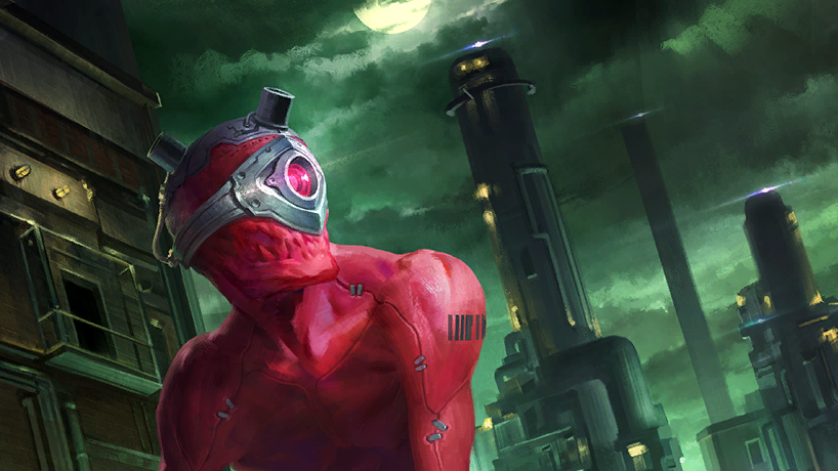
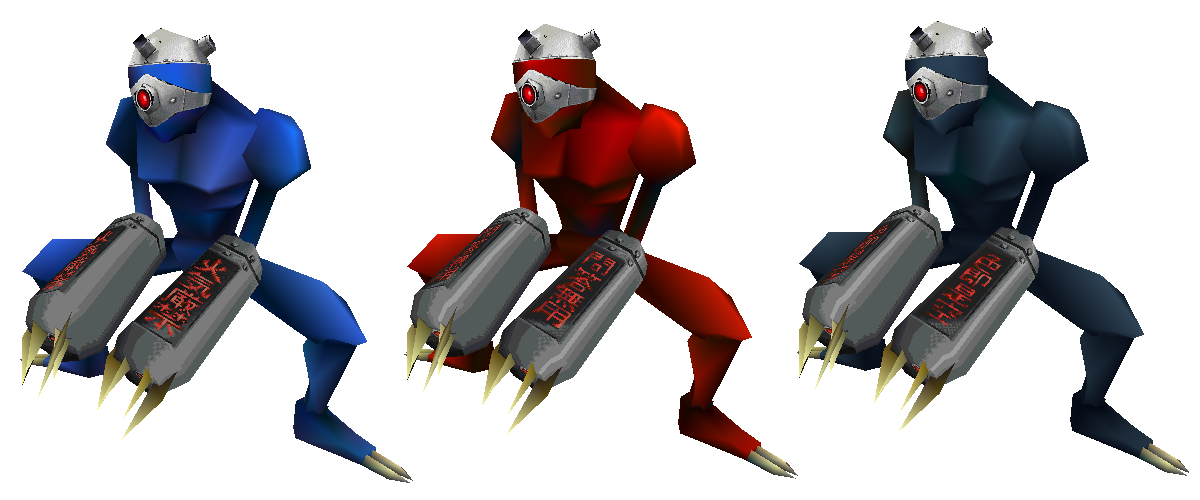

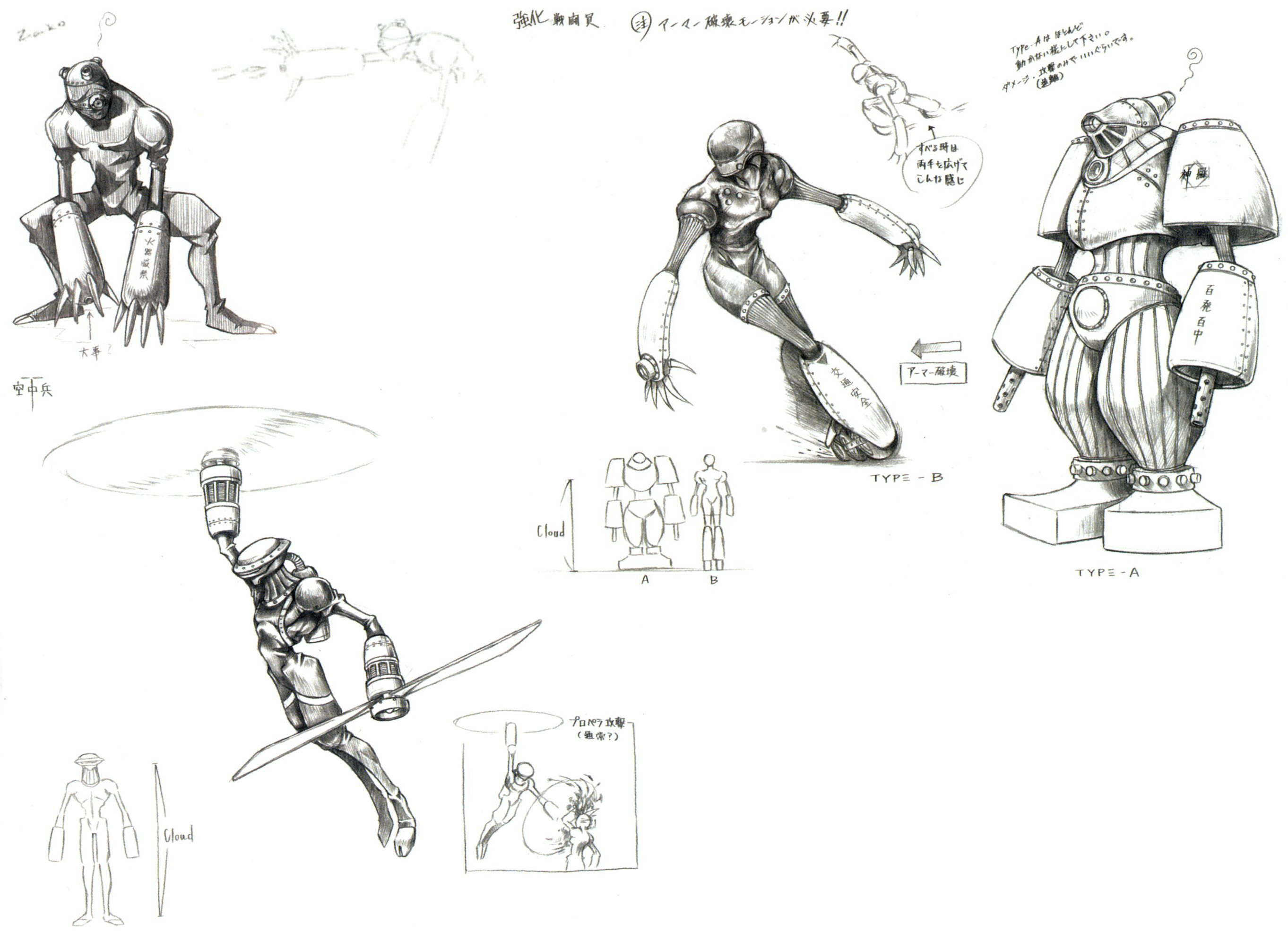
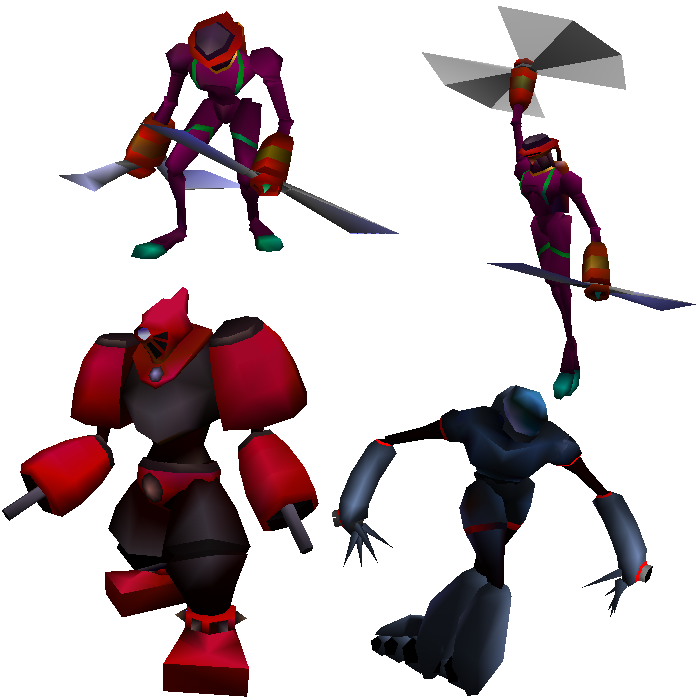
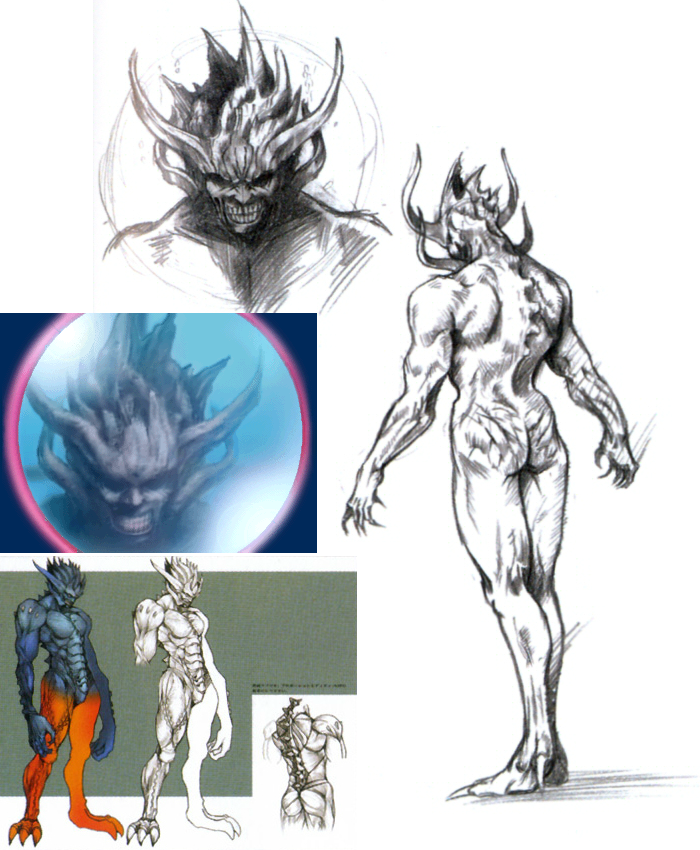
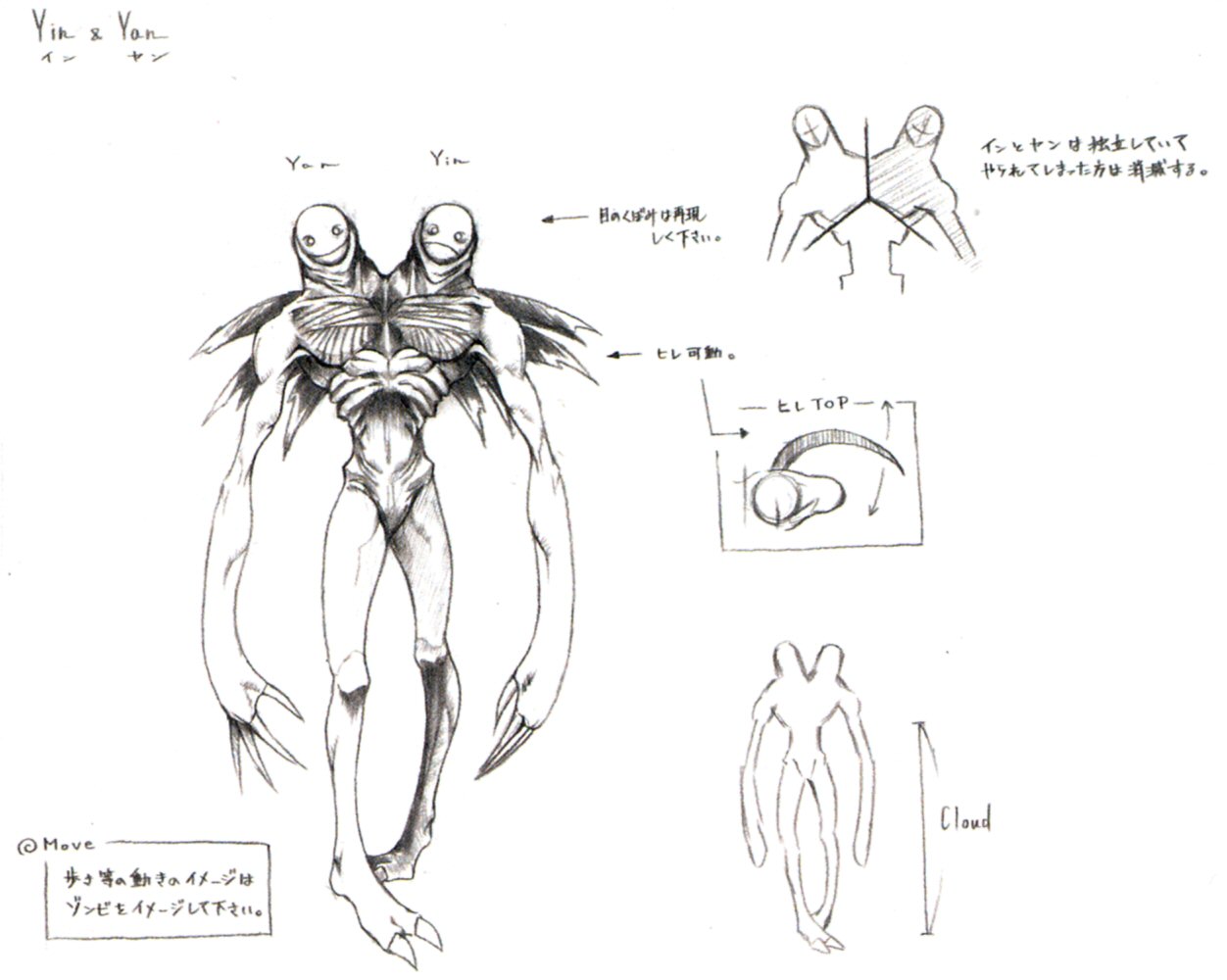
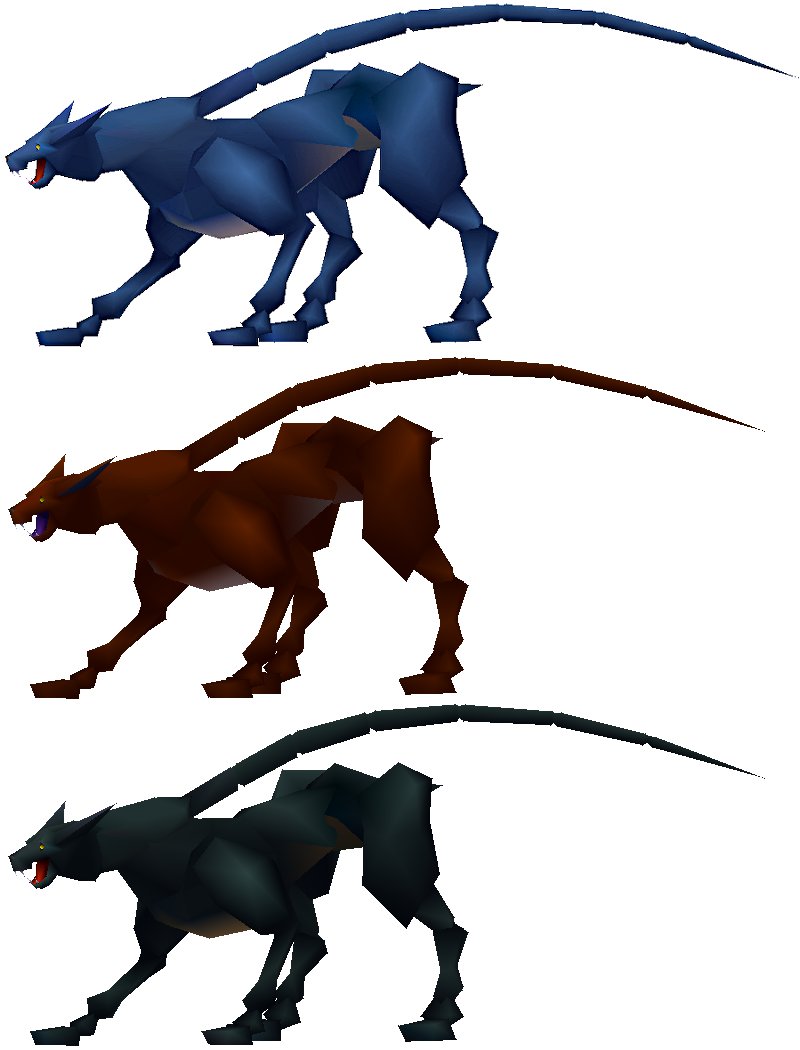
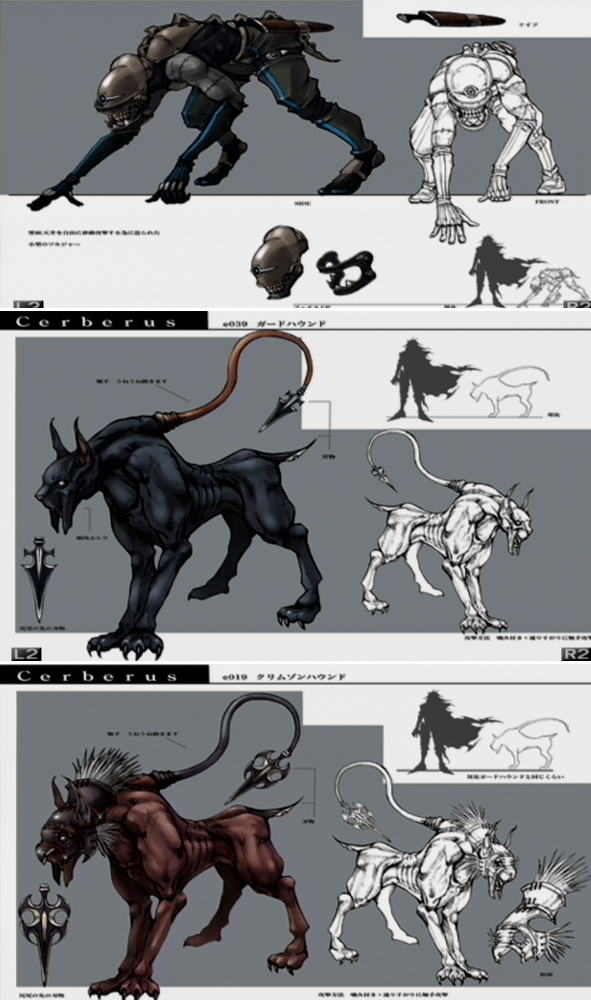
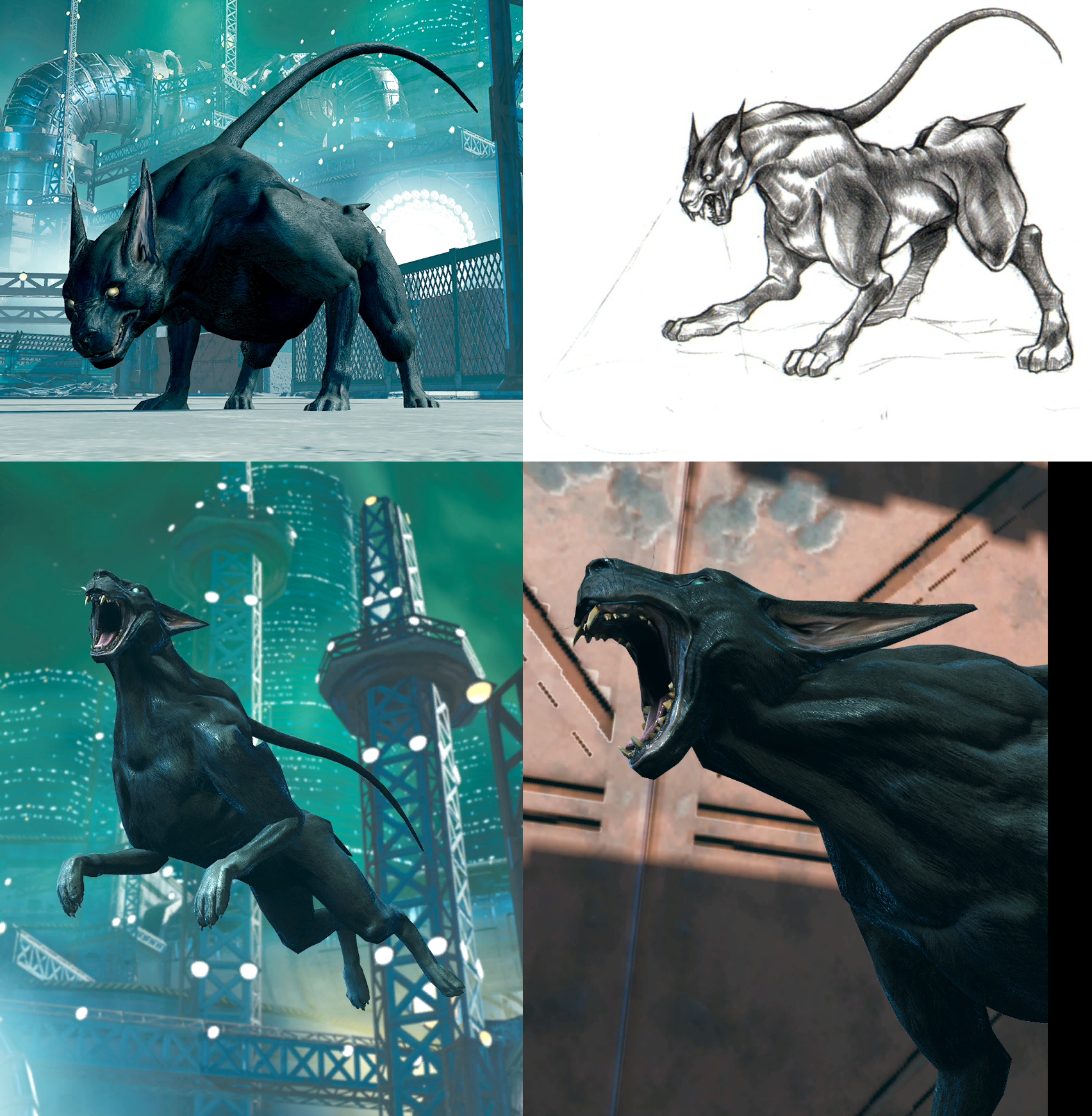
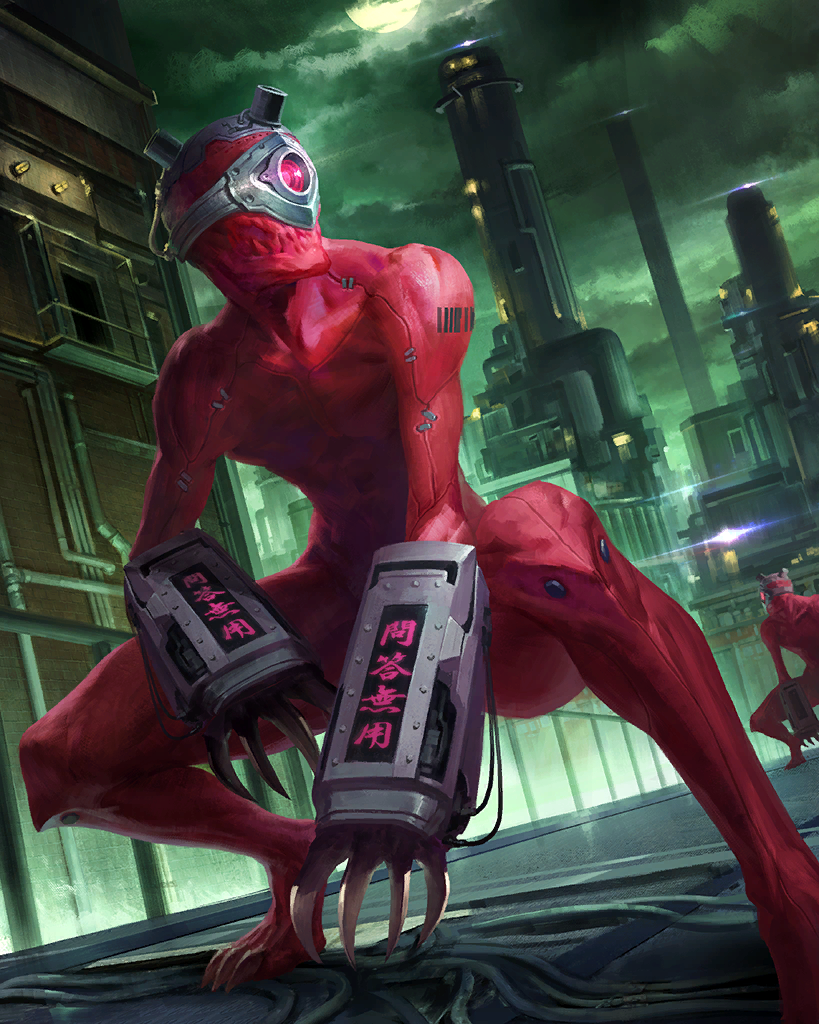
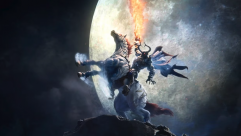

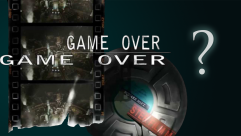

No comments yet
Log in or Register
Interesting article indeed, always wondered about what are this enemies and what are their backgrounds.